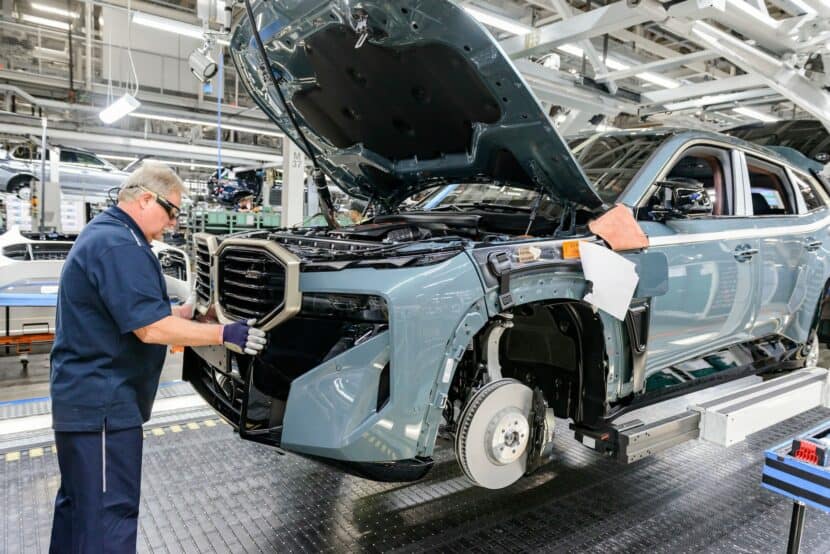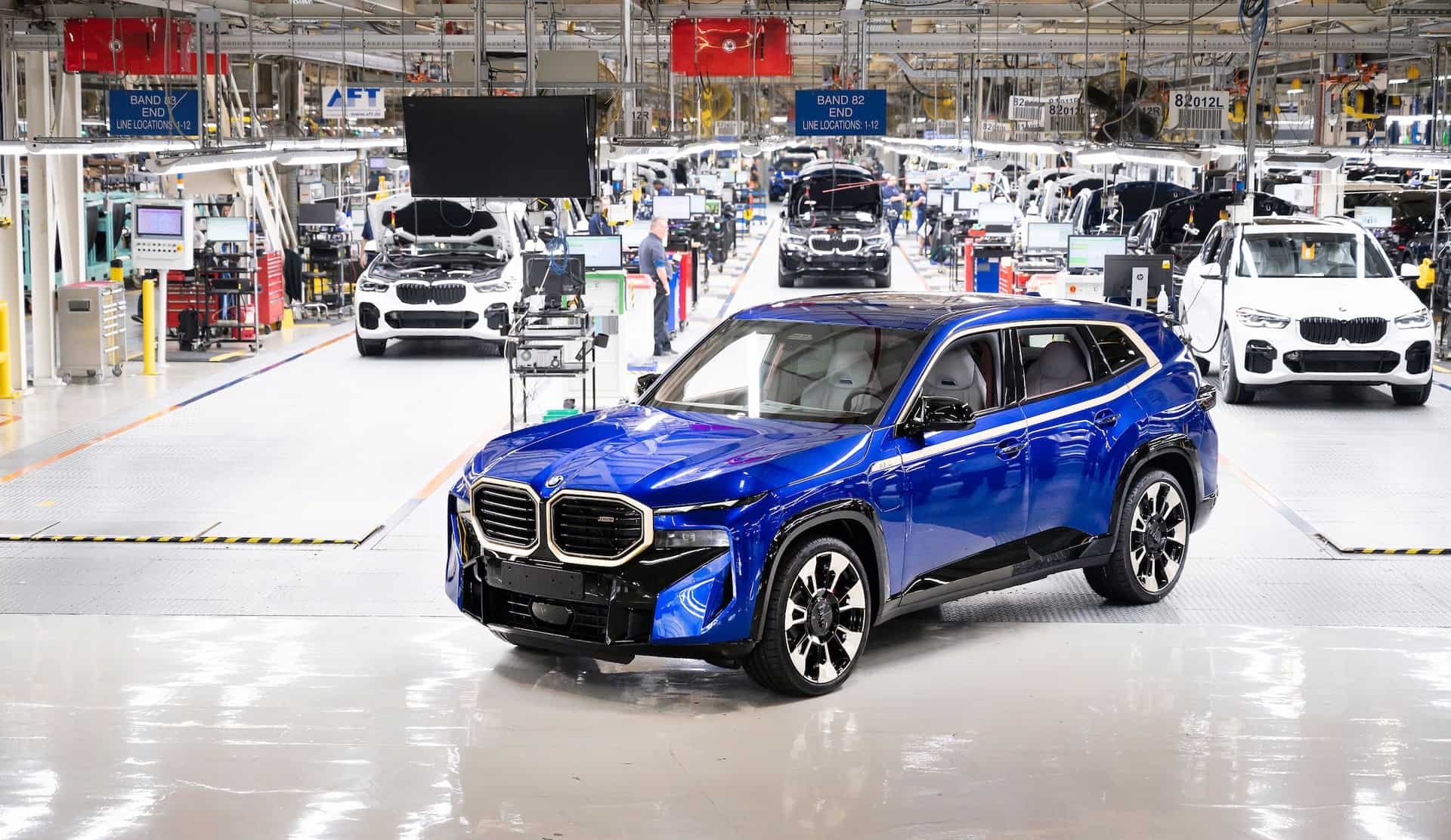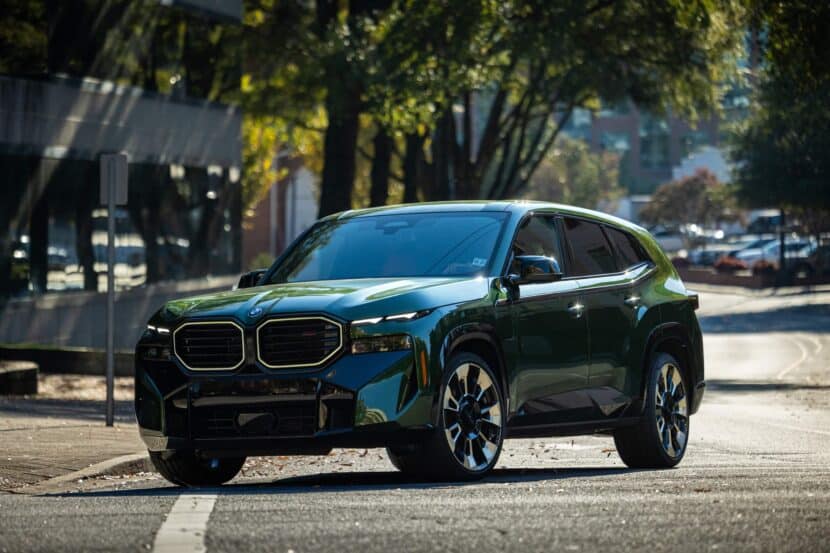Following its world premiere at the end of September, the BMW has entered series production at Plant Spartanburg. The plug-in hybrid SUV codenamed “G09” is manufactured on the same assembly line as the X5, X6, and X7 SUVs together with their M and M Performance versions. At the same factory, technicians also assemble the smaller X3 and X4, complete with their high-performance derivatives.
Look beyond the controversial styling and the XM is important for several reasons. It’s the first dedicated M model since the mid-engined M1 supercar from the late 1970s and early 1980s. At the same time, this is the first fully fledged M model with a hybrid powertrain. The large SUV paves the way for the direction BMW’s go-faster division will take, with all product launches going forward to have a hybrid (and eventually purely electric) drivetrain.
Adopting a name used by Citroën from 1989 until 2000 for a hatchback, the XM is among the first BMW models to use the S68 engine. It’s a mild-hybrid V8 with a familiar 4.4-liter displacement and a pair of turbochargers, as already seen in the X7 M60i and the new 7 Series 760i. In this application, the combustion engine alone is good for 489 horsepower (360 kilowatts). Combined with the electric motor, the total system output is 653 hp (480 kW).

Coming later in 2023, the XM Label Red will earn the title of the most powerful BMW production car ever by packing a monstrous 748 hp (550 kW) and 737 lb-ft (1,000 Nm) of torque. Performance figures have not been disclosed, but it should be considerably quicker than the standard model rated at 4.3 seconds for the 0 to 62 mph (100 km/h) sprint.
The XM will begin to arrive at dealers around the world next spring, with BMW expecting the United States, China, and the Middle East to represent the main markets. At home in the US, the boldly styled SUV retails from $159,000 while German pricing kicks off at €170,000.
The Plant Spartanburg in South Carolina where the XM calls home will be expanded in the coming years to accommodate at least six electric SUVs by 2030. A massive investment of $1 billion will bring these Neue Klasse-based EVs to life, while another $700 million will be spent to build a new battery assembly facility near the factory.
Back in September, Plant Spartanburg reached an important milestone when the six millionth vehicle, an X6 M Java Green, was assembled.
Source: BMW





































































